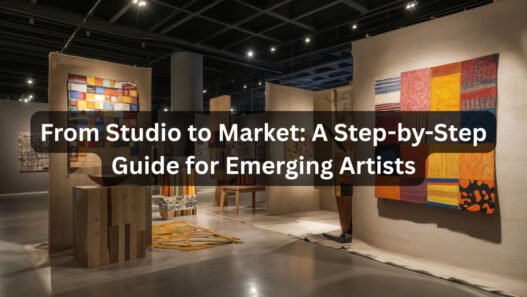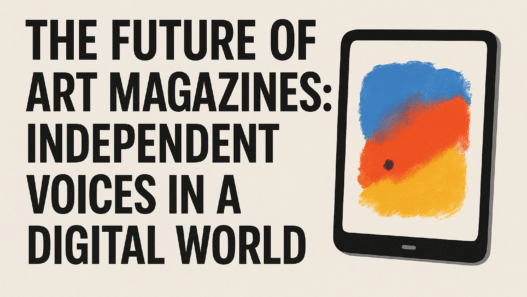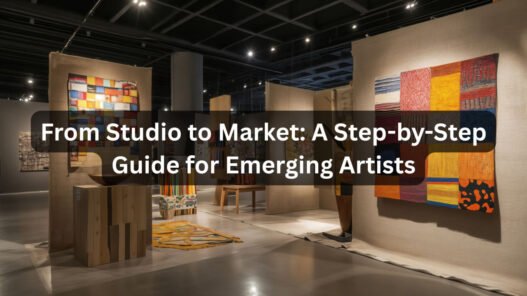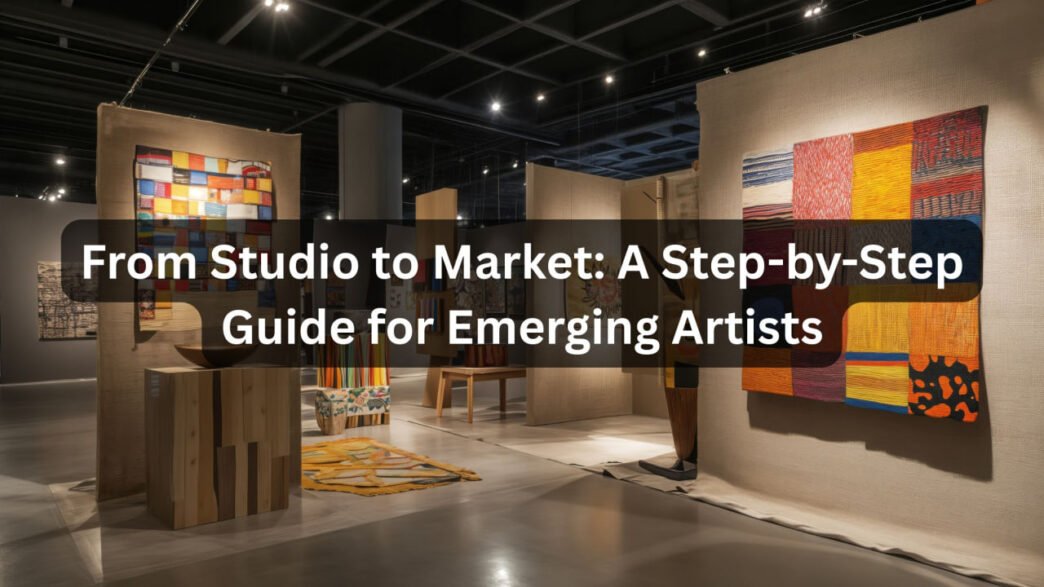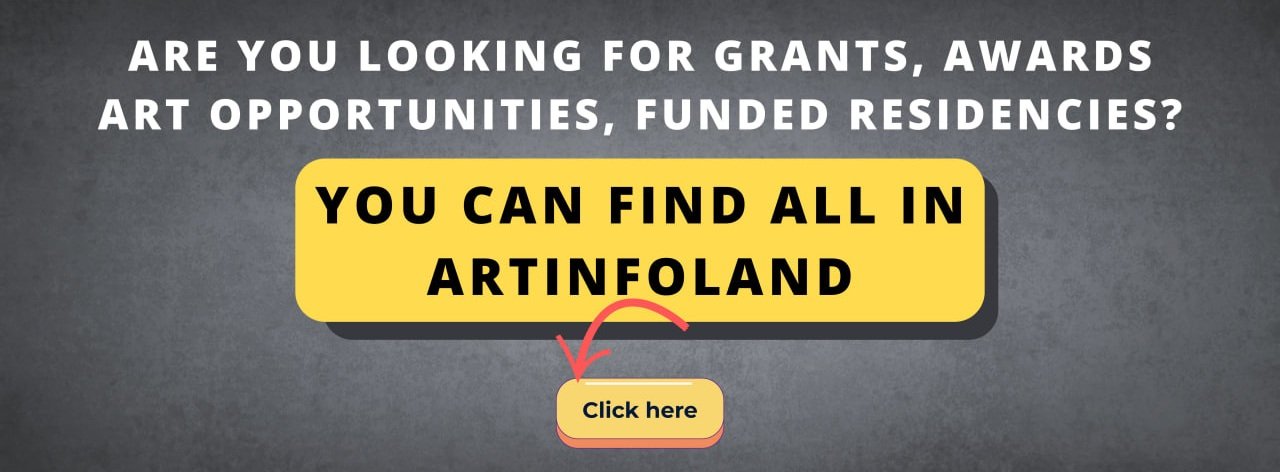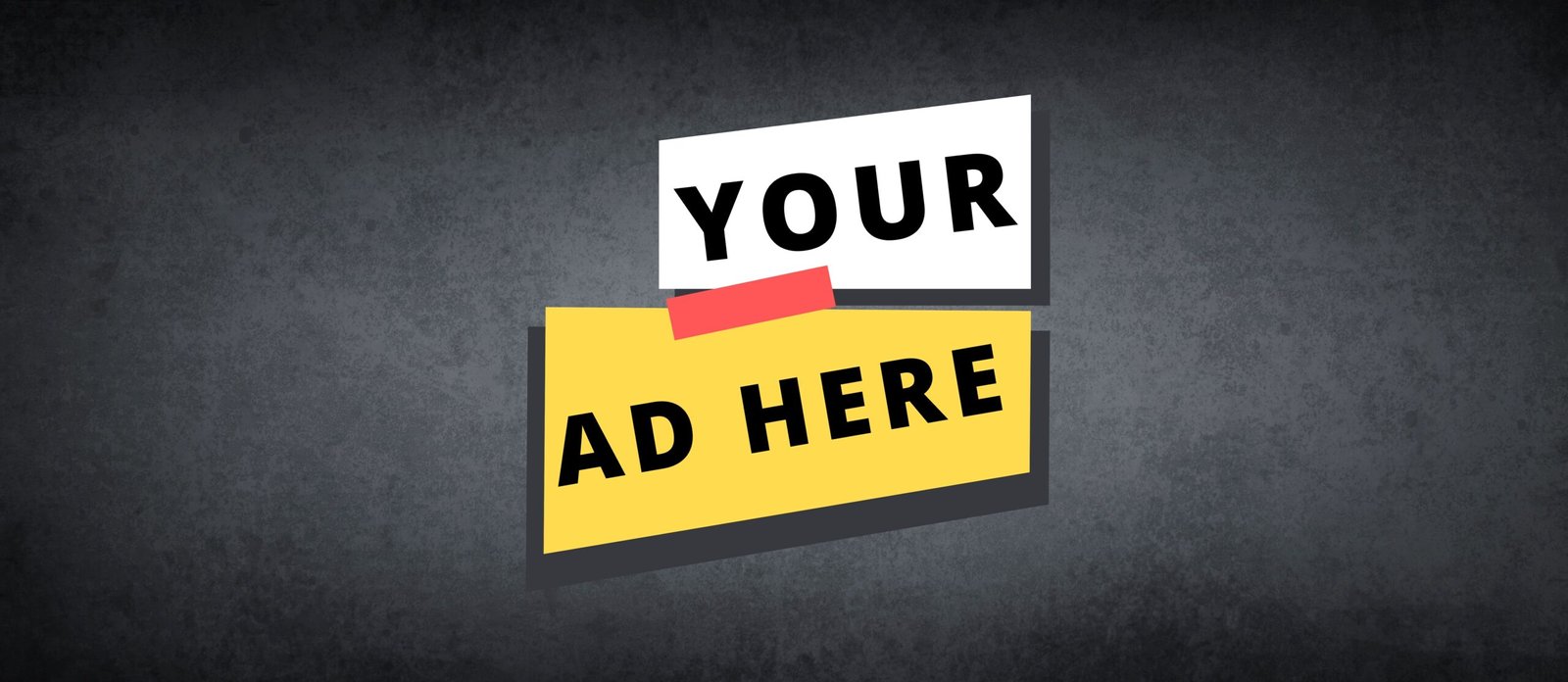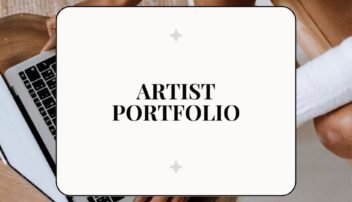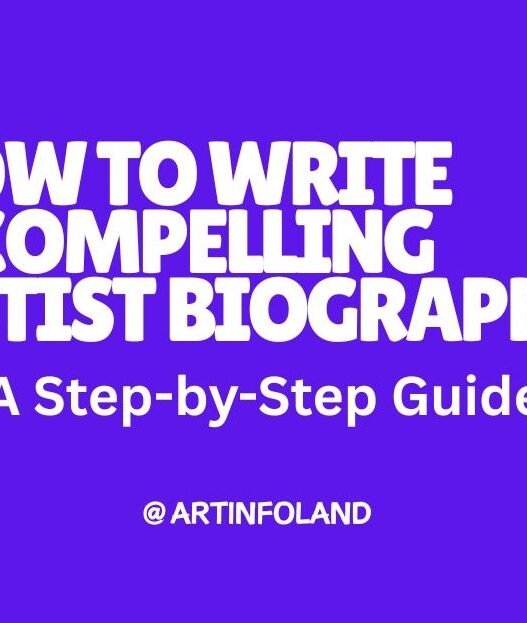Breaking into the art world can feel overwhelming. For many emerging artists, creating the work is only half the journey — the other half lies in learning how to share it with the world. Moving from the solitude of the studio to the visibility of the market requires more than talent; it demands strategy, self-awareness, and an understanding of how today’s art ecosystem works.
This guide outlines a practical roadmap to help young artists navigate that transition — from refining your artistic voice to building professional visibility and connecting with collectors, galleries, and curators.
1. Define Your Artistic Identity
Before stepping into the art market, take the time to understand your own artistic language.
Ask yourself:
- What themes or ideas drive your practice?
- How do your materials, methods, or concepts distinguish you from others?
- What emotions or questions do you want your work to evoke?
Having clarity about your artistic identity helps you communicate your vision effectively — whether you’re writing your artist statement, talking to a curator, or posting on social media. Remember: the market responds to authenticity, not imitation.
2. Build a Professional Portfolio
Your portfolio is your visual resume. It should be well-organized, consistent, and tailored to your goals.
Include:
- 10–15 strong works that represent your current direction.
- High-quality images — natural lighting, clean backgrounds, and clear detail.
- Basic information: title, medium, dimensions, and year.
- An artist statement and short bio that frame your practice.
For online presence, create a professional website or digital portfolio on platforms like ArtStation, Behance, or even Instagram, but ensure it reflects a cohesive visual narrative.
3. Understand the Art Ecosystem
The art world isn’t a single space — it’s a network of overlapping communities. Learn the difference between:
- Commercial galleries, which focus on selling art.
- Nonprofit spaces, which emphasize experimentation and social engagement.
- Art fairs and residencies, which expand visibility and networking.
Attending exhibitions, talks, and art fairs (even as a visitor ) can help you understand how artists present themselves, what kinds of work are being collected, and where your practice fits.
4. Start Local: Exhibitions and Open Calls
One of the most effective ways to gain visibility is through open calls and group shows. Many art centers, galleries, and festivals look specifically for emerging artists.
Look for opportunities that match your artistic values and medium. Start small — local exhibitions, student shows, or online showcases — and gradually build toward international exposure.
Keep a simple system for tracking deadlines, applications, and results. Persistence and organization will help you stay ahead in a competitive field.
5. Connect and Collaborate
Networking in the art world isn’t about selling yourself — it’s about building genuine relationships. Connect with peers, curators, writers, and collectors in meaningful ways:
- Attend openings and talk to other artists.
- Join art communities online and offline.
- Share others’ work and participate in creative discussions.
Collaboration can lead to unexpected opportunities — from joint exhibitions to shared studio spaces or curatorial projects.
6. Pricing and Selling Your Art
Pricing can be tricky for emerging artists. A few guidelines:
- Research similar artists’ prices based on experience, size, and medium.
- Start modestly to encourage early sales and collector interest.
- Be transparent — maintain consistent pricing across platforms.
When you sell a work, document the sale, keep collector contact information, and create a simple certificate of authenticity. Treat your art practice as both creative and professional labor.
7. Use Digital Platforms Wisely
Online visibility is crucial. Use social media strategically — not just for self-promotion, but for storytelling.
Share your process, inspiration, and studio life to build a personal connection with your audience.
Consider listing works on curated online platforms like Artsy, Saatchi Art, or Artfinder.
However, balance your digital activity with real-world engagement. Collectors often value personal connection as much as digital presence.
8. Seek Mentorship and Feedback
The art journey is rarely linear. Seeking guidance from mentors, teachers, or established artists can help you avoid common pitfalls. Don’t hesitate to ask for feedback — honest critique is part of growth.
Residencies, workshops, and curatorial programs are great environments to expand both your creative and professional perspectives.
9. Stay Consistent and Reflective
Art careers develop over time. Consistency, patience, and curiosity are your best allies.
Keep creating, documenting, and reflecting on your practice. Update your portfolio regularly, write about your work, and track your progress.
Remember that growth in the art world is not always visible — sometimes, the most significant shifts happen quietly in the studio before they reach the public eye.
10. Embrace the Long Game
Success in art isn’t about overnight fame; it’s about longevity and evolution.
Stay open to change, keep learning, and adapt to new contexts, from digital exhibitions to emerging collector bases in global markets.
Ultimately, the goal is not just to “enter” the market but to sustain a creative life within it — one rooted in integrity, curiosity, and continual transformation.
At Artinfoland Magazine, we believe every emerging artist deserves the tools to thrive. The journey from studio to market is not a race but a conversation, one that begins with the courage to share your voice with the world.




